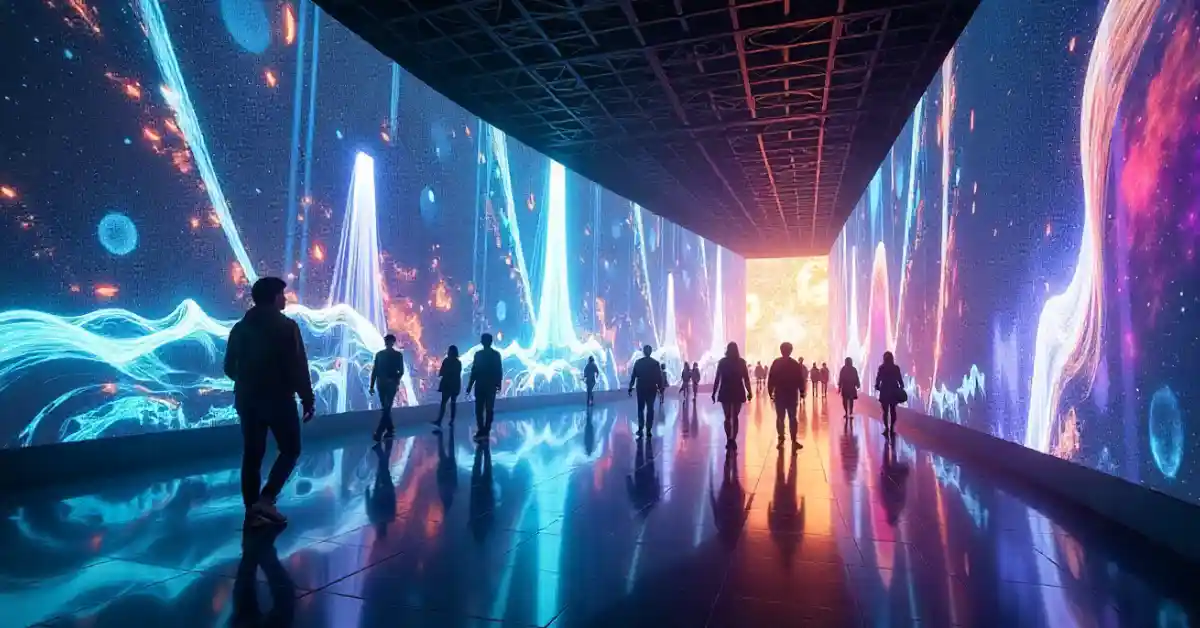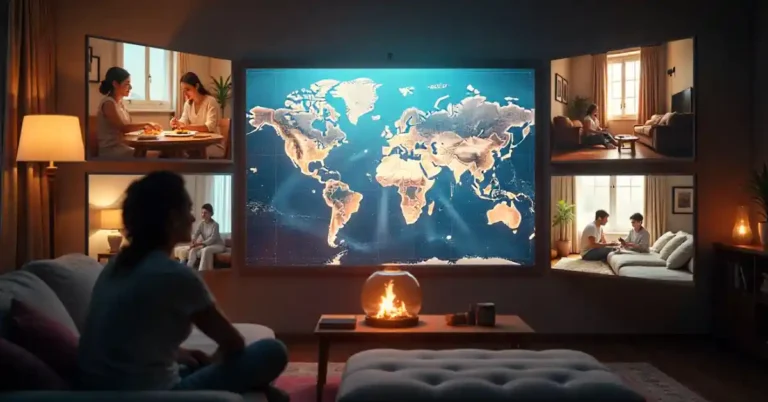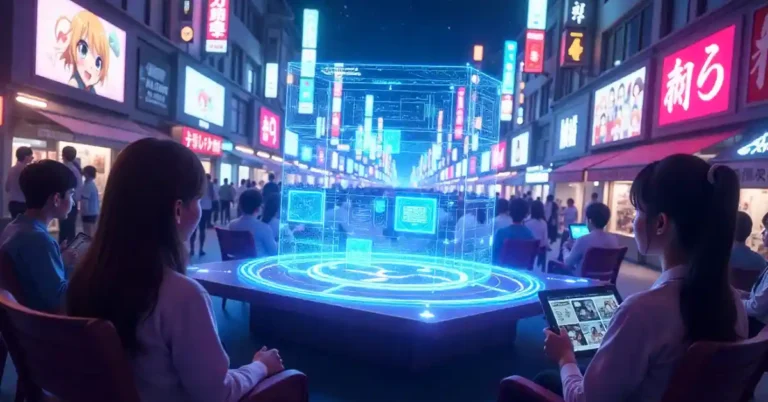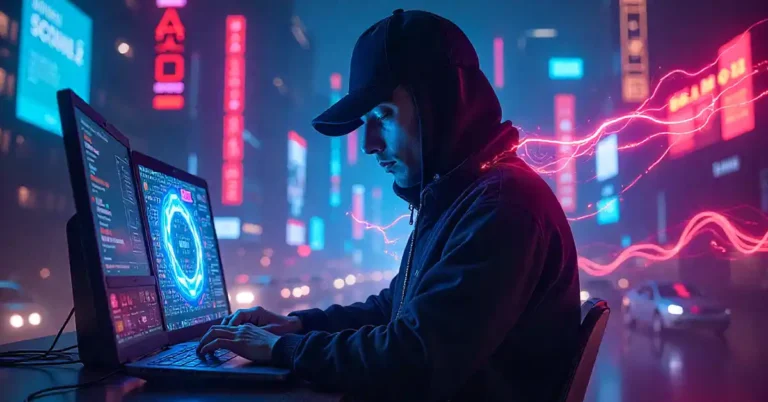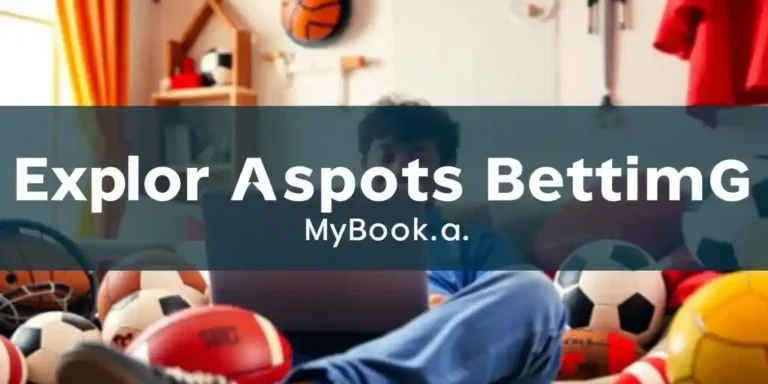Imagine stepping into a room where the walls, ceiling, and floor dissolve into a seamless world of vibrant visuals and immersive storytelling. This isn’t science fiction-it’s the essence of Spaietacle, a groundbreaking trend that’s reshaping how audiences experience visual entertainment. But what exactly is Spaietacle, and why is it capturing the imagination of creators and viewers alike? Let’s dive in.
What Is Spaietacle?
Spaietacle is a fusion of spatial design and spectacle, combining advanced projection technology, interactive elements, and immersive environments to create a fully enveloping visual experience. Unlike traditional screens or even VR headsets, Spaietacle transforms entire spaces into dynamic canvases. This allows audiences to feel as if they are inside the story, rather than just watching it unfold.

The term itself is a portmanteau of “space” and “spectacle,” highlighting the emphasis on spatial immersion and grand visual impact. It’s not just about watching images but being surrounded by them, engaging multiple senses simultaneously. The technology behind Spaietacle often involves intricate mapping and real-time data processing, enabling seamless transitions and interactions that enhance the narrative flow. This innovative approach not only captivates the audience but also invites them to become active participants in the unfolding experience, fostering a sense of agency and exploration.
How Spaietacle Differs from Other Visual Media
While cinema and television rely on flat screens, and virtual reality requires headsets, Spaietacle breaks these boundaries by integrating visuals into physical environments. This can be done through 360-degree projections, augmented reality overlays, or even holographic displays. The goal is to blur the lines between the viewer’s reality and the visual narrative. The use of cutting-edge technology allows for a level of detail and interactivity that traditional media simply cannot match, creating a unique platform for storytelling.
For example, a Spaietacle installation might turn a gallery room into a rainforest, complete with moving foliage, ambient sounds, and interactive elements that respond to visitor movements. This multi-sensory approach creates a deeper emotional connection and a memorable experience. Imagine walking through a space where the ground feels alive with the sound of rustling leaves, and as you step forward, the environment shifts and evolves around you, revealing hidden creatures and vibrant flora. Such experiences not only entertain but also educate, as they can be designed to convey important messages about nature, culture, or history, making learning an engaging and immersive journey.
The Technology Behind Spaietacle
Creating a Spaietacle experience requires a blend of cutting-edge technology and artistic vision. Several key technologies make these immersive environments possible.
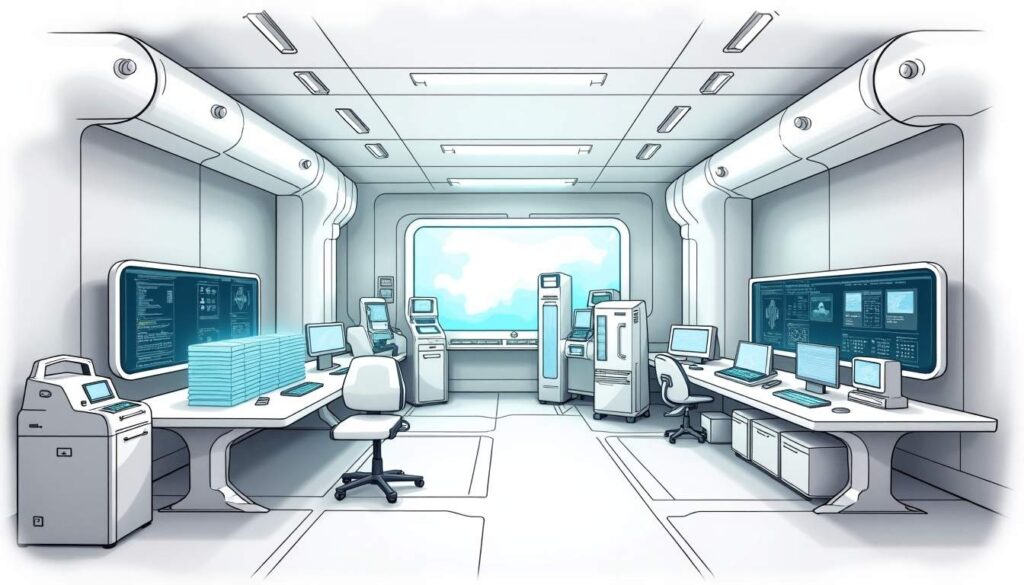
Projection Mapping
Projection mapping is at the heart of many Spaietacle setups. It involves projecting images onto irregularly shaped surfaces, turning walls, floors, and objects into dynamic displays. Unlike traditional projections on flat screens, this technique adapts visuals to complex geometries, creating illusions of depth and movement.
This technology has evolved rapidly, with high-resolution projectors and sophisticated software enabling seamless, high-fidelity visuals that can react in real time to audience interaction. The software used for projection mapping often incorporates advanced algorithms that can analyze the projected surface in real-time, ensuring that the visuals remain perfectly aligned even as the audience moves. This level of precision enhances the overall experience, allowing for breathtaking transformations of ordinary spaces into extraordinary visual narratives.
Interactive Sensors and Motion Tracking
Interactivity is a defining feature of Spaietacle. Sensors track the presence and movements of visitors, allowing the visuals and sounds to change based on their actions. This can range from simple touch-sensitive panels to advanced motion capture systems that detect gestures and positions.
For instance, walking through a Spaietacle installation might cause flowers to bloom or stars to twinkle in response to your movement, making the experience personal and unique. The integration of haptic feedback technology can further enhance this interactivity, providing tactile responses to users’ actions, such as vibrations or resistance, which can deepen the sense of immersion. As visitors engage with the environment, they become active participants in the storytelling process, forging a deeper connection with the art.
Augmented and Mixed Reality
Augmented reality (AR) and mixed reality (MR) technologies are increasingly integrated into Spaietacle experiences. Using AR glasses or mobile devices, users can see digital elements overlaid onto the physical environment, enhancing immersion without isolating them from the real world.
This blend allows creators to add layers of information, storytelling, or interactive features that complement the physical space, enriching the overall spectacle. For example, a visitor might point their device at a mural, triggering an animated story that unfolds in front of them, complete with sound effects and character interactions. This level of engagement not only captivates the audience but also encourages exploration and curiosity, as each interaction reveals new layers of the narrative. Additionally, the use of AR can facilitate educational experiences, allowing users to learn about the history or science behind the artwork in an engaging and memorable way.
Applications of Spaietacle
Spaietacle is not limited to one form of entertainment. Its versatility makes it suitable for a wide range of applications, from art exhibitions to live performances and retail experiences.
Art and Museums
Many contemporary artists and museums have embraced Spaietacle to present works in innovative ways. Instead of viewing static paintings or sculptures, visitors can immerse themselves in environments that bring art to life.
For example, an exhibition might use projection mapping to animate a classic painting, allowing viewers to explore its details up close or see the story unfold around them. This approach attracts new audiences and offers fresh perspectives on traditional art. Additionally, interactive installations can invite visitors to become part of the artwork, encouraging them to engage with the pieces in a way that traditional galleries cannot. By integrating technology, museums can create a dialogue between the viewer and the artwork, making the experience more personal and memorable.
Concerts and Live Shows
Live entertainment benefits greatly from Spaietacle’s immersive qualities. Concerts can transform venues into otherworldly spaces, with visuals synchronized to music and performers’ movements. This creates a multi-sensory experience that heightens emotional impact.
Some artists have incorporated Spaietacle elements into their tours, using 360-degree projections and interactive lighting to engage audiences beyond just sound. The integration of augmented reality (AR) can also enhance the concert experience, allowing fans to interact with virtual elements through their smartphones, further blurring the lines between the digital and physical realms. This not only captivates the audience but also creates shareable moments that can extend the concert’s reach through social media, fostering a deeper connection between the artist and their fans.
Retail and Brand Experiences
Retail spaces are also tapping into Spaietacle to create memorable brand experiences. Stores can become immersive environments that tell a brand’s story or showcase products in innovative ways.
For example, a fashion brand might use projection mapping to simulate different environments where their clothing fits, from urban streets to exotic landscapes, allowing customers to visualize the product in context. Furthermore, interactive displays can invite customers to engage with products through touch or movement, making shopping not just a transaction but an adventure. Brands can also leverage Spaietacle to host exclusive events that blend shopping with entertainment, such as live fashion shows or influencer meet-and-greets, creating a buzz that draws in crowds and enhances customer loyalty. This fusion of retail and immersive experiences is redefining how consumers interact with brands, making each visit unique and exciting.
Challenges and Considerations
Despite its exciting potential, Spaietacle comes with challenges that creators and venues must navigate.
Technical Complexity and Cost
Setting up a Spaietacle installation requires significant technical expertise and investment. High-quality projectors, sensors, and computing power can be expensive, and the integration of these components demands skilled technicians and designers.
This can limit accessibility, especially for smaller organizations or independent artists. However, as technology advances and costs decrease, more creators are experimenting with Spaietacle formats.
Space Requirements
Because Spaietacle transforms entire environments, it often requires large or specially designed spaces. Not every venue can accommodate the physical and technical demands, which can restrict where these experiences are offered.
Additionally, managing crowd flow and ensuring safety within immersive environments is crucial, especially when visitors are encouraged to move freely.
Audience Adaptation
Not all audiences are immediately comfortable with immersive experiences. Some may find the sensory input overwhelming or disorienting. Designers must balance intensity and accessibility, providing options for different comfort levels.
Clear instructions and thoughtful design can help make Spaietacle experiences enjoyable for a broad range of visitors.
The Future of Spaietacle
As technology continues to evolve, Spaietacle is poised to become an even more prominent part of visual entertainment. Advances in projection technology, AI-driven interactivity, and wearable AR devices will expand creative possibilities.

Imagine walking through a city where entire neighborhoods transform into interactive storytelling landscapes, or attending a theater performance where the stage extends into the audience’s space through immersive visuals. These scenarios are within reach.
Spaietacle also holds promise beyond entertainment-in education, therapy, and social engagement. Immersive environments can make learning more engaging, support mental health through calming or stimulating spaces, and foster community through shared experiences.
Bringing Spaietacle Home
While large-scale installations dominate the scene today, smaller-scale Spaietacle experiences are emerging for home use. Advances in affordable projectors, smart lighting, and AR apps allow individuals to create personalized immersive environments.
This democratization could lead to new forms of storytelling and social interaction, as people craft and share their own Spaietacle moments.
Conclusion
Spaietacle represents a thrilling shift in how stories and visuals are presented. By dissolving traditional boundaries and inviting audiences into fully immersive spaces, it offers a fresh way to connect with content on deeper emotional and sensory levels.
Though still in its early stages, Spaietacle’s blend of technology and creativity is opening doors to new experiences that captivate and inspire. Whether in museums, theaters, retail spaces, or even homes, this trend is redefining what it means to be entertained.

